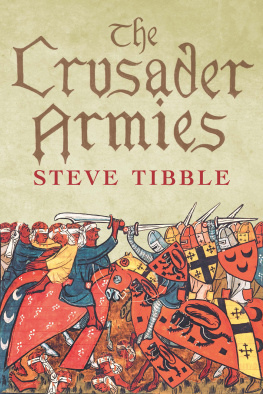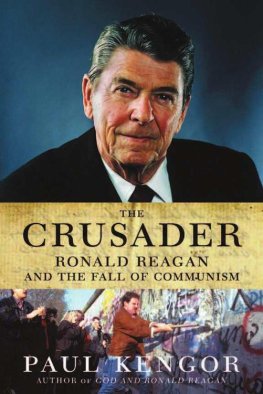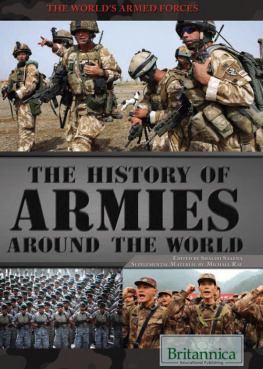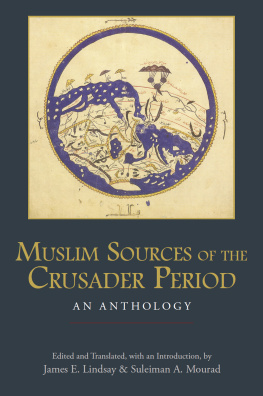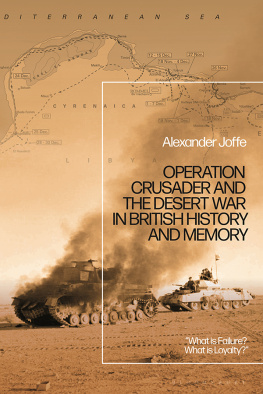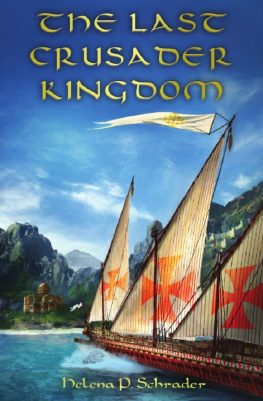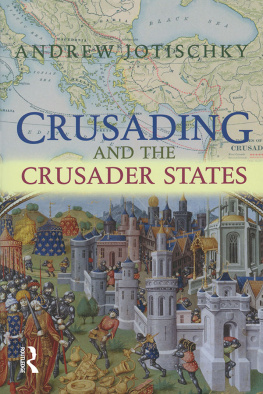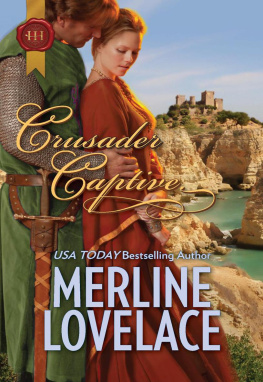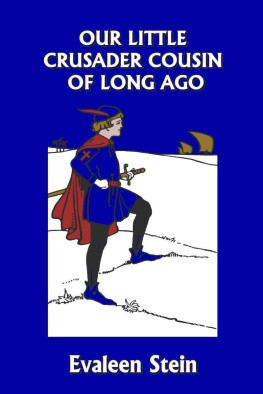Tibble - The crusader armies
Here you can read online Tibble - The crusader armies full text of the book (entire story) in english for free. Download pdf and epub, get meaning, cover and reviews about this ebook. City: New Haven;CT, year: 2018, publisher: Yale University Press New Haven and London, genre: History. Description of the work, (preface) as well as reviews are available. Best literature library LitArk.com created for fans of good reading and offers a wide selection of genres:
Romance novel
Science fiction
Adventure
Detective
Science
History
Home and family
Prose
Art
Politics
Computer
Non-fiction
Religion
Business
Children
Humor
Choose a favorite category and find really read worthwhile books. Enjoy immersion in the world of imagination, feel the emotions of the characters or learn something new for yourself, make an fascinating discovery.
The crusader armies: summary, description and annotation
We offer to read an annotation, description, summary or preface (depends on what the author of the book "The crusader armies" wrote himself). If you haven't found the necessary information about the book — write in the comments, we will try to find it.
The crusader armies — read online for free the complete book (whole text) full work
Below is the text of the book, divided by pages. System saving the place of the last page read, allows you to conveniently read the book "The crusader armies" online for free, without having to search again every time where you left off. Put a bookmark, and you can go to the page where you finished reading at any time.
Font size:
Interval:
Bookmark:
THE CRUSADER ARMIES

Copyright 2018 Steve Tibble
All rights reserved. This book may not be reproduced in whole or in part, in any form (beyond that copying permitted by Sections 107 and 108 of the U.S. Copyright Law and except by reviewers for the public press) without written permission from the publishers.
For information about this and other Yale University Press publications, please contact:
U.S. Office:
Europe Office:
Set in Minion Pro by IDSUK (DataConnection) Ltd
Printed in Great Britain by Gomer Press Ltd, Llandysul, Ceredigion, Wales
Library of Congress Control Number: 2018931552
ISBN 9780300218145 (hbk)
A catalogue record for this book is available from the British Library.
10 9 8 7 6 5 4 3 2 1
To Jacqui, Amy and Lucy
CONTENTS
PLATES, MAPS AND FIGURES
Plates
Maps
Table
Plans
FOREWORD
T HE M IDDLE E AST is continually in the news, and a raft of shorthand assumptions make the crusades and crusading warfare seem very accessible: almost comfortably familiar. Labels such as crusaders, Islamists and jihadists, however anachronistically they are used, provide a readily available explanation for the past, a plausible connection to current affairs. They give us an off-the-shelf way to view the clash of civilisations which we are told is unfolding in front of us.
Yet many, maybe most, of our easy assumptions are either wrong or subtly deceptive half-truths.
This book looks at the crusades, and crusading warfare in particular, in a way which may seem surprisingly out of kilter with modern perceptions. It suggests that:
 crusading warfare was not fundamentally driven by religion, though religion would, of course, be a powerful rallying cry and a vital motivator for individuals or specific groups. It was a powerful proximate factor but not the ultimate cause;
crusading warfare was not fundamentally driven by religion, though religion would, of course, be a powerful rallying cry and a vital motivator for individuals or specific groups. It was a powerful proximate factor but not the ultimate cause;
 the key driver was, instead, the age-old conflict between nomads and sedentary societies, herders against farmers. From a Eurocentric perspective, we tend to view conflict in the region as being primarily between western crusaders and Muslims: but, as we shall see, the local sedentary Muslim societies all suffered crushing defeats by the same nomadic invaders long before the crusaders arrived, and continued to be subjected to them long after the crusaders had gone. The fact that most of the nomadic powers were, nominally at least, Muslim, helps distract us from seeing the underlying axis of the struggle;
the key driver was, instead, the age-old conflict between nomads and sedentary societies, herders against farmers. From a Eurocentric perspective, we tend to view conflict in the region as being primarily between western crusaders and Muslims: but, as we shall see, the local sedentary Muslim societies all suffered crushing defeats by the same nomadic invaders long before the crusaders arrived, and continued to be subjected to them long after the crusaders had gone. The fact that most of the nomadic powers were, nominally at least, Muslim, helps distract us from seeing the underlying axis of the struggle;
 these underlying conflicts between nomads and sedentary communities were propelled by two ostensibly very modern, but in reality entirely ancient, phenomena: climate change and mass migration. Climate change in the century prior to the crusades made life on the steppes increasingly difficult, and propelled nomadic tribes towards the Middle East. The mass migration that resulted was the inevitable precursor to conflict with local settled communities, as everyone fought for control of scarce resources;
these underlying conflicts between nomads and sedentary communities were propelled by two ostensibly very modern, but in reality entirely ancient, phenomena: climate change and mass migration. Climate change in the century prior to the crusades made life on the steppes increasingly difficult, and propelled nomadic tribes towards the Middle East. The mass migration that resulted was the inevitable precursor to conflict with local settled communities, as everyone fought for control of scarce resources;
 contrary to our preconceptions, crusader armies very often consisted largely of Arabs, Syrians and Armenians. Even those soldiers we think of as western were in fact largely mixed-race settlers. Similarly, Muslim armies often contained remarkably few Muslims;
contrary to our preconceptions, crusader armies very often consisted largely of Arabs, Syrians and Armenians. Even those soldiers we think of as western were in fact largely mixed-race settlers. Similarly, Muslim armies often contained remarkably few Muslims;
 the practice of warfare between these extraordinarily resourceful groups of people was far more sophisticated than one might expect of medieval fighting men. Far from being simplistic or static, we find a desperate armed struggle unfolding across the entire region over the course of the twelfth century. It was the outcome of this struggle which shaped the face of the Middle East that we see today.
the practice of warfare between these extraordinarily resourceful groups of people was far more sophisticated than one might expect of medieval fighting men. Far from being simplistic or static, we find a desperate armed struggle unfolding across the entire region over the course of the twelfth century. It was the outcome of this struggle which shaped the face of the Middle East that we see today.
In the normal course of events, academic insights are slow to be absorbed into the public consciousness. There may be a time lag of years, sometimes even a decade or two, before what is generally known among scholars in a specialist field becomes widely accepted. But it eventually becomes part of the broader understanding of a subject.
This does not seem to be the case with crusading studies, despite the mass of advances in the field. The main reason for this has been the relentless media coverage of contemporary conflict in the Middle East, as it vastly outweighs the impact recent research has had on public perceptions of the subject. What academics take for granted is still largely unknown by the general public.
This book tries to look at crusading armies and the societies that depended on them from a fresh perspective, building on the new research, and highlighting some of the areas where our modern sensibilities are most at variance with current academic thinking.
In doing so I have relied shamelessly on the outstanding work carried out by crusading scholars over the past two decades, notably Ronnie Ellenblums work on climate change, Frankish colonisation, castles and sieges; John Frances many books and papers on warfare in the region; Malcolm
Crusading academics are a wonderfully friendly and hospitable group. This book has benefited greatly from conversations with many of them, including Bernard Hamilton, Denys Pringle, Tom Asbridge, Andrew Jotischky, Andrew Buck, Faith Garrett, Rabei Khamisy, John France, Jaroslav Folda and my old friend Chris Marshall. Mike Fulton has kindly shared some of his wonderful insights into siege warfare and castle-building. Nick Hopkinson, Bob Morrison, Jonathan James, Charles Masefield and John Crowther have all read the text and made much appreciated comments. Similarly, Heather McCallum, Rachael Lonsdale and Marika Lysandrou of Yale University Press have all shown patience and insight far beyond the bounds of professionalism.
The seminal work in this field, R.C. Otto Smails Crusading Warfare, is still a wonderful read sixty years after it was first published, and it was Ottos enthusiasm and generosity that initially inspired much of this book. A particularly hair-raising 1980s road trip round the medieval battlefields and castles of Israel in the Smail camper-van was a wonderful, and very idiosyncratic, introduction to the subject.
Malcolm Barbers masterly The Crusader States (Yale, 2012) has been my constant guide on matters of context, politics and chronology. Malcolm, in common with my father and a strangely disproportionate number of crusading professors, is a life-long supporter of Brentford Football Club, no doubt attracted to both by the perverse pleasures of a hopeless situation and the romance of a lost cause. But it is also a sure indicator of his pragmatic and unpretentious approach to academic, and sporting, matters. He could not have been more charming, helpful or supportive.
Jonathan Phillips, of Royal Holloway, University of London, has been extremely kind and generous, far more welcoming in taking me back into the world of crusader studies than I could have expected. He and Malcolm Barber have both read earlier drafts of this book, spotting many of the worst errors and nudging me towards a clearer understanding of the subject. The remaining mistakes are, of course, all my own work. Ronnie Ellenblum has likewise been an inspiration. His iconoclastic approach to the subject has opened up many new fields of investigation, and his entertaining conversational style always challenges accepted views.
Next pageFont size:
Interval:
Bookmark:
Similar books «The crusader armies»
Look at similar books to The crusader armies. We have selected literature similar in name and meaning in the hope of providing readers with more options to find new, interesting, not yet read works.
Discussion, reviews of the book The crusader armies and just readers' own opinions. Leave your comments, write what you think about the work, its meaning or the main characters. Specify what exactly you liked and what you didn't like, and why you think so.

